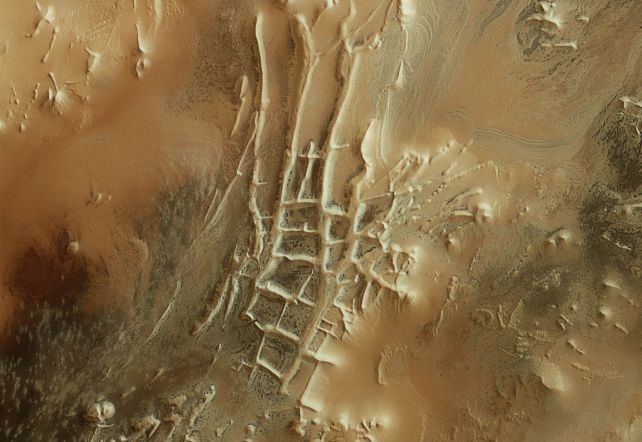In 1764, a lieutenant in the Dutch army encountered something unexpected and strange in the hills of a limestone mine near present-day Maastricht. The discovery consisted of the gigantic skull of a prehistoric reptile described as “a huge breathing fish”, similar to a whale but with much sharper teeth. Then they named it Mosasaur, which means “meuse lizard” because it was discovered near the Meuse River. Family ever since The mosasaursIt grew and scattered all kinds of remains in Europe, Asia, North America, South America and even Antarctica.
Mosasaurs represent a large group Sea Predators This, in many cases, easily exceeds ten meters in diameter and is real Kings of the Cretaceous Oceans For millions of years.
However, no matter how much we think we know about dinosaurs, sooner or later a new fossil appears that surprises paleontologists with unknown and fascinating characteristics. That's precisely what a team of researchers conducted a few days ago on the banks of the Aritagawa River in Wakayama Prefecture (Japan). They found the nearly complete remains of a new type of mosasaur never seen before.
This discovery has been published Journal of Systematic Paleontology And scientists called it “Megapterygius wakayamensis”, meaning “large-winged” reptile due to its unusually large hind fins, while wakayamensis refers to a Japanese prefecture. Because scientific names are often shortened and difficult for the general public to remember, the researchers added a nickname to the new reptile and named it Wakayama Soryu. SorryIt is in Japanese mythology A blue water dragon.
In 2006, paleontologist Akihiro Misaki was searching for ammonite fossils on the banks of the Aritagawa River when he came across a large black spine. He immediately forgot about looking for molluscs and focused on the strange piece. It turned out to be one of the most complete mosasaur skeletons ever discovered and the remains include its impressive skull and complete cervical and dorsal vertebrae with more than 40 vertebrae, pairs of ribs, right and left front fins and left rear fin. . Of course, it is not an easy task to carefully extract all these pieces, to correctly assemble the enormous puzzle, to carry out a thorough study and to provide an adequate explanation, in this case, almost 17 years since Misaki discovered the first vertebra.
A complete view of the remains found shows us a A powerful marine saurianA The size of a great white sharkExtra long back fins and a A large back similar to an orca. These qualities made this “blue dragon” a fearsome, fast and accurate hunter when it hunted in what would become the Pacific Ocean some 72 million years ago.
This combination of shark and orca is unheard of Experts recognize themselves That “This type of body morphology has no modern analogue, from fish to penguins or sea turtles. “No animal we know has four large flippers that they use in conjunction with a tail fin.”
“I thought I knew mosasaurs well.” Takuya Konishi explains“But we quickly learned that it was something we hadn't seen before,” said the lead author of the published study.
In video: A Tyrannosaurus rex skeleton sells for $6.1 million
Konishi, Takuya et al. «A Newly Derived Mosasaurine (Squamata: Mosasaurinae) from Southwest Japan Reveals Unexpected Lateral Diversity Among Hydropedal Mosasaurs». Journal of Systematic Paleontology (2023) DOI:10.1080/14772019.2023.2277921.
Harry Baker”A 72-million-year-old 'blue dragon' discovered in Japan is unlike anything we've ever seen, experts say» Live Science (2023)


:quality(85)/cloudfront-us-east-1.images.arcpublishing.com/infobae/733BC4GLSFHFXGV2W5HA6RSFF4.png)
:quality(85)/cloudfront-us-east-1.images.arcpublishing.com/infobae/YMJL5TYTFCDXREBK5GQ3GF2NSE.jpg)
:quality(85)/cloudfront-us-east-1.images.arcpublishing.com/infobae/6HQACP6IWFDCZILI6XO6YCAIT4.jpg)